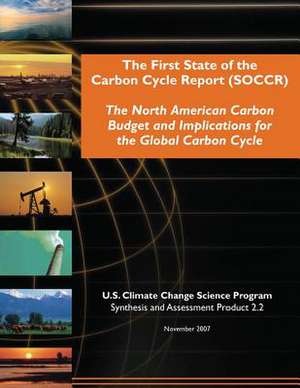The First State of the Carbon Cycle Report (Soccr)
Autor Program, U. S. Climate Change Scienceen Limba Engleză Paperback
| Toate formatele și edițiile | Preț | Express |
|---|---|---|
| Paperback (2) | 133.54 lei 3-5 săpt. | |
| CREATESPACE – | 133.54 lei 3-5 săpt. | |
| CREATESPACE – | 140.41 lei 3-5 săpt. |
Preț: 133.54 lei
Nou
Puncte Express: 200
Preț estimativ în valută:
25.56€ • 26.58$ • 21.10£
25.56€ • 26.58$ • 21.10£
Carte disponibilă
Livrare economică 25 martie-08 aprilie
Preluare comenzi: 021 569.72.76
Specificații
ISBN-13: 9781507829936
ISBN-10: 1507829930
Pagini: 264
Dimensiuni: 216 x 280 x 14 mm
Greutate: 0.62 kg
Editura: CREATESPACE
ISBN-10: 1507829930
Pagini: 264
Dimensiuni: 216 x 280 x 14 mm
Greutate: 0.62 kg
Editura: CREATESPACE
